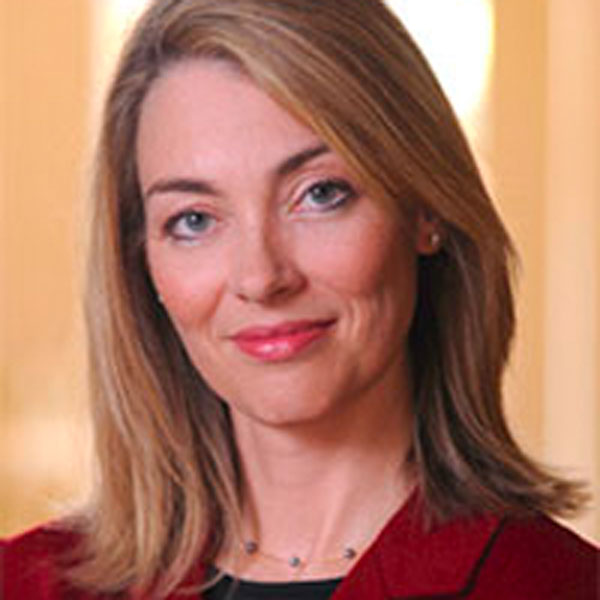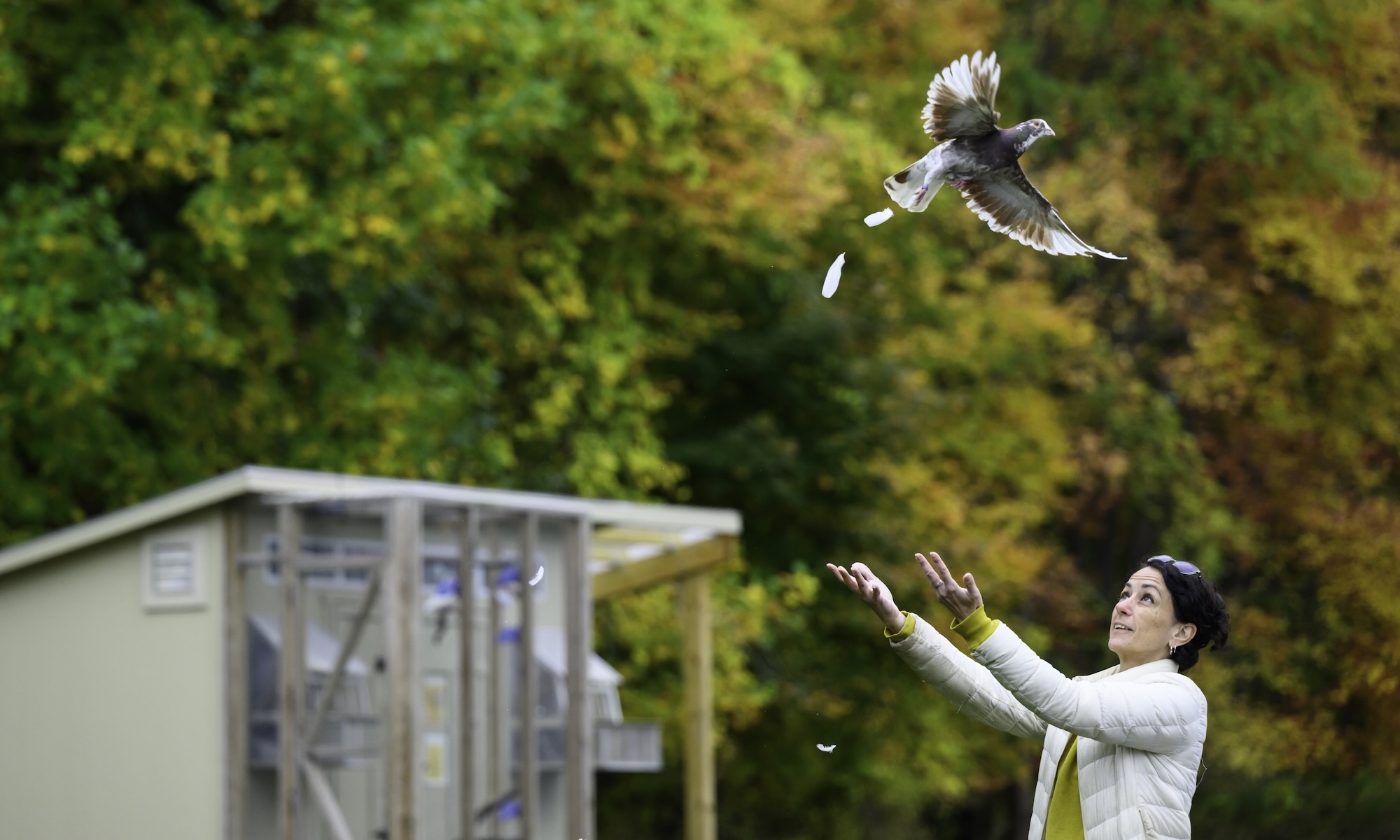How Rochester’s Vice President for Research built a career on curiosity, collaboration, and access.
In a second-floor office in the Del Monte Research Building at the University of Rochester Medical Center is an unassuming door that wasn’t always there. Nothing extraordinary. Simply an extra entrance cut into the wall when Stephen Dewhurst, the vice president for research at the University of Rochester, first moved into the space. Dewhurst asked for the extra door in 2009 when he became chair of the Department of Microbiology and Immunology because he wanted to offer direct access, without people’s having to go first through his administrator in the adjacent room.
“Making yourself available is super important,” Dewhurst says. “People are more likely to come talk to you if they find you approachable.”
That small architectural adjustment is in many ways indicative of his approach to leadership: accessible and acutely aware of the human relationships that frequently underpin the successful work of scientists.
With no fewer than 49 patents or co-patents to his name, Dewhurst has become a respected scientific and academic leader. An accomplished virologist and HIV researcher, he’s served as the vice president for research since 2023 (having held the role on an interim basis for the preceding two years) and as the vice dean for research at Rochester’s School of Medicine and Dentistry since 2013.
He came, saw, and stayed
English-born Dewhurst, who earned a bachelor’s degree in cellular pathology from the University of Bristol in the United Kingdom and a PhD in pathology and microbiology from the University of Nebraska, first arrived on the Rochester campus in 1990. He never left.
“I stayed because I really liked the people I met in my interview,” he says. “That relationship to faculty, staff, and students here has never changed.”
Though trained as a virologist during the early years of the HIV/AIDS pandemic, Dewhurst’s career was never confined to a single field. His research has crossed disciplines—from a long-term collaboration with a pediatrician to studies of viral peptides with chemists. At one point, he worked with faculty from the departments of chemistry, obstetrics and gynecology, and infectious diseases to study how self-assembling peptides can influence the sexual transmission of HIV. These weren’t just scientific intersections—they were human ones, too.

The best collaborations, says Dewhurst, are those when “you get to work with people who know stuff you don’t, and who think of things you’d never think of.”
One of his most enduring collaborations was with the late Caroline Breese Hall, a professor in the Department of Pediatrics at the Medical Center. An expert in pediatric infectious diseases, Hall had begun to study a newly described virus known as human herpesvirus 6 (HHV-6), which had been recently linked to roseola infantum (also known as sixth disease)—a very common childhood illness that her father, Burtis Breese, had studied back in the 1930s and 40s. Hall had access to clinical samples; Dewhurst brought molecular virology expertise to the table.
Together, and with the help of other collaborators, they explored questions neither could have answered alone—such as the clinical consequences of viral infections in young kids. In fact, in infants and young children, the team showed, HHV-6 infection is a major cause of visits to the emergency department, febrile seizures, and hospitalizations.
According to Dewhurst, it’s this spirit of cross-pollination that makes up the essence of Rochester.
“The culture is extremely collaborative,” he says, pointing out the geographic proximity of the Medical Center and River Campus, which are across the street from one another.
“There’s something different here,” he adds. Large labs with more than 20 people are quite rare at Rochester, “so you likely need to collaborate to succeed. Most people cannot be an island unto themselves.”
A mentor’s gift
Dewhurst’s leadership style was forged not just in labs but also through various mentors in his early career. He recalls a pivotal moment during his time as a postdoctoral researcher at the Harvard School of Public Health, when he was part of a research team preparing a paper for a top scientific journal—the type of opportunity that can catapult a young scientist’s career.
The work involved scientists from two institutions, and the senior leaders of both groups felt that their contributions merited recognition. As a result, Dewhurst’s position as first author on the paper was suddenly in jeopardy. A postdoctoral trainee at the time, Dewhurst knew the loss of first-author credit would greatly diminishing his future job prospects.
That’s when his mentor, James Mullins, made a quiet but powerful decision. “Jim was kind enough to remove himself from the senior authorship, in order to create space for me to be first author,” Dewhurst says. “That made a huge difference. I wouldn’t be sitting here if that hadn’t happened.”
It’s a lesson that stuck with him and one that he’s been trying to pay forward to his own mentees.

An accidental leader
Truth be told, Dewhurst’s career was less of a well-laid plan than a slow accumulation of yeses to unexpected opportunities. At Rochester, he first led a summer research program for undergraduates at the School of Medicine and Dentistry and then won a National Institutes of Health grant to support those historically excluded from biomedical science. Later came an associate deanship, a period as a department chair, followed by a vice deanship.
Dewhurst insists he never set out to become an administrator. Instead, each step was something of a surprise. “People have asked me to step into roles that I might not have thought of for myself,” he says.
But he figured that if others believed he could do it, he’d give it his best shot.
Now, as the University’s head of research, Dewhurst is a steward of programs and initiatives far beyond his own training and expertise.
“I’m grateful that I get to be a voice for the research community,” he says, explaining that he often speaks about the University’s research with the media, legislators, members of the board of trustees, donors, and other supporters of the institution.
As that voice he helps champion and oversee projects in areas as diverse as astrophysics, biomedical research, education, extended reality, humanistic inquiry, music, quantum science, and resilience. As an example, he describes Rochester’s Laboratory for Laser Energetics: the facility not only supports national security and world-class research on nuclear fusion and plasma physics; it’s also the site of training for scientists, including those who helped achieve nuclear fusion, or “ignition,” in 2022.
“The majority of the people who did that experiment trained at Rochester,” Dewhurst says, adding that “researchers get paid to explore. In doing that, we create enormous societal benefit.”
Putting the art in science

An avid collector of contemporary art, Dewhurst’s office boasts a dozen framed drawings and paintings—all original art—and two large canvases with strong colors and bold brushstrokes.
He was instrumental in bringing artist Charmaine Wheatley to the University, originally to create portraits of people affected by HIV and mental health diagnoses—groups that are often stigmatized.
“The ability to humanize people and make their stories understandable, relatable, and important,” Dewhurst says, “is something unique that art can do—that science can’t.” Which is why, in part, Wheatley has more recently created a gallery of Rochester neuroscientists that seeks both to humanize the researchers and to explain how their work improves lives.
Those dual commitments—to discovery and humanity—shape how he sees the future of the University’s research enterprise. Despite budget pressures and political headwinds, Dewhurst remains hopeful, noting the University’s recent decision to invest $8.5 million in four new transdisciplinary research centers.
“We’re all concerned about federal support for scholarship and research,” he says, “but research will continue. And it’ll continue to advance knowledge, to save lives, to improve the world—because those ideals and goals are something we can all agree on.”




